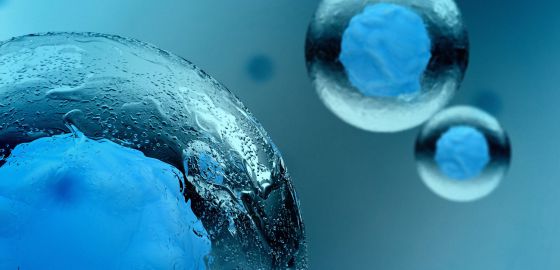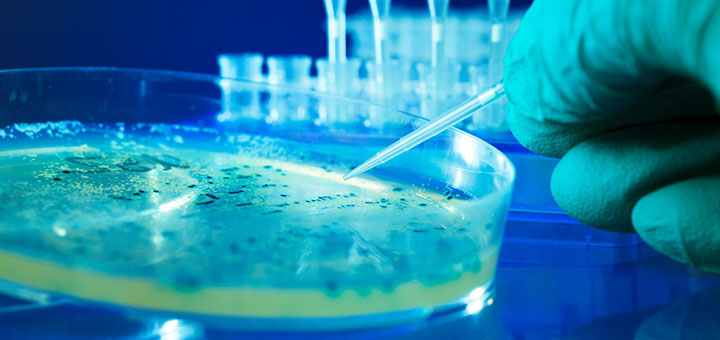1st International Workshop on Matter Out of Equilibrium
Overview Lectures
An overview of linear irreversible thermodynamics
Mariano López de HaroInstituto de Energas Renovables Universidad Nacional Autónoma de México, Temixco, Mor. 62580 (MEXICO)
The theory of linear irreversible thermodynamics was fully developed in the first half of the 20th century. An overview will be provided of the assumptions underlying this theory, its microscopic foun- dations, and some of its great successes in the description and prediction of experimental results. Some limitations and one attempt to extend it to the nonlinear regime will also be pointed out.
Time dependent Forces in Polymer-Colloid Systems
P. PincusPhysics and Materials Departments University of California, Santa Barbara

Colloidal particles suspended in a solvent are often decorated with physisorbed polymers in order to provide stability against aggregation driven by ubiquitous attractive forces such as those engendered by dispersion forces. The elastic polymers act as bumpers that prevent the particles from approaching one another sufficiently close to be mutually bound in their Van de Waals wells. This, however, requires that the polymers be irreversibly bound. This is not an issue for macroscopic surfaces but may be delicate when the polymer and colloid dimensions are comparable. We will discuss the fundamental science of this problem and show that scientific questions are raised which have yet to be adequately addressed.
Inference in microscopy and biophysics
Philip NelsonUniversity of Pennsylvania
I’ll discuss two situations in which knowing a little bit about probability goes a long way in helping us to extract the meaning from experiments. The first involves superresolution microscopy. The second involves changepoint detection in single-molecule studies of molecular motors.
Colloidal gelation
Emanuela ZaccarelliCNR ISC and Sapienza University, Italy
In this lecture I will focus on different routes to colloidal gelation. Gels are low-density, disordered arrested states that may have different origin. For colloidal particles intracting with isotropic attraction on top of the hard-core repulsion, gelation results from an arrested phase separation and hence, it is a non-equilibrium process. Instead, when interactions between particles are anisotropic, one can drive the formation of gels in equilibrium. Some results from simple models will be discussed and their connection with experimental systems.
Nonlinear Glassy Rheology
Thomas VoigtmannDLR and University of Dũsseldorf
Dense colloidal suspensions as well as non-colloidal glass-forming fluids driven out of equilibrium by mechanical forces, show pronounced nonlinear flow effects. These are caused by a competition of slow internal relaxation and the external driving. The microscopic processes that govern the macroscopic material behavior are nonlocal both in time and space, encoding the divergence of viscosity in the fluid, and the rigidity of the amorphous solid that forms at the glass transition. I will give an overview of current theoretical approaches that approach the problem from either extreme, the homogeneous fluid and the spatially heterogeneous amorphous solid.
Very soft-matter physics: the maximally fragile capsids of HIV
Robijn BruinsmaUniversity of California Los Angeles.
The protein capsid that surrounds the genome of a virus protects the viral genome against degrad- ing enzymes and also resist mechanical force. The capsid of the HIV is a remarkable exception: it is extraordinarily fragile. The talk will discuss why very fragile shells could play a key role in the life cycle of retroviruses.
Describing Non-equilibrium: Onsager and the Existence of Dynamically Arrested States
M. Medina NoyolaInstituto de Física "Manuel Sandoval Vallarta", Universidad Autónoma de San Luis Potosí
The thermodynamic properties of equilibrium systems can be determined from “first principles” (i.e., in terms of intermolecular forces) by the methods of statistical thermodynamics, whose great diversity derives from a single fundamental physical principle: the principle of maximum entropy. In contrast, the determination of the dynamic and transport properties (such as time-dependent correlation functions, transport coefficients, etc.) is based on an array of approaches, including kinetic theory, fluctuating hydrodynamics, projection operators, mode-coupling theory, etc., with no apparent unifying general principle. In this talk I discuss the proposal that Onsager’s theory of linear irreversible thermodynamics and of time-dependent thermal fluctuations around the equilibrium state provides the most general and fundamental framework for the description of non-equilibrium phenomena. We then review a recent extension of Onsager's theory, to non-equilibrium non-stationary conditions. This extended theory reveals the existence of two fundamentally different classes of stationary states of a liquid: the first corresponds to the ordinary thermodynamic equilibrium states and the second to kinetically arrested states, characterized by the condition that the long-time asymptotic limit of (the eigenvalues of) the kinetic matrix vanishes without requiring the thermodynamic equilibrium conditions to be fulfilled. We discuss the application of these concepts to the description of the non-equilibrium diffusive and structural relaxation of a colloidal liquid under the influence of external fields, such as gravitational forces acting in the process of sedimentation, but which may in the process be trapped in meta-stable or dynamically arrested states.
Electrostatic self-assembly of biomolecules
Monica Olvera de la CruzNorthwestern University, United States
Biomolecules organize into supramolecular assemblies in environments containing many components with ionizable groups. In this talk we discuss the assembly of charged heterogeneous molecules into biomimetic structures including DNA-protein assemblies, amphiphiles assembled into biocompatible fibers, and polyhedral shells that resemble organelles. In particular, we describe buckled polyhedral vesicles by co-assembling amphiphiles with oppositely charged head groups (+3 and -1) into crystalline bilayers. These membranes undergo highly specific molecular packing changes in response to changes in the solution pH, resulting in different mesoscale morphologies and properties. These transformations allow the design of microcompartments that can open in response to external pH variations. The mesoscale morphology is correlated to the intermolecular packing induced by altering the pH; switching from faceted vesicles with hexagonal tail packing, to long bilayer ribbons or flat sheets for less symmetric tail packing. We find re-entrant transitions in crystalline packing of the tails upon increasing the pH, with varying symmetries and packing densities that depend upon the length of the carbon tails. Moreover, mixtures of monovalent anionic and cationic surfactants generate micron-sized icosahedral vesicles. It has been shown that segregation of the excess anionic component to the vertices, leads to 25-60 nm-diameter pore formation. We describe the relative importance of electrostatics and bending energy in the process. We note that holes also arise in molecular ionic mixtures, generating perforated structures. We discuss the relevance of these studies to materials science, biotechnology and medicine.
The SLAMs, BAMs, and Jams: every day is Black Friday in Biological Active Matter
Thomas AngeliniUniversity of Florida, United States
Each year in the US, the holiday shopping season begins with a violent bang on the last Friday of November, known as Black Friday. On Black Friday, shoppers gather in large, dense hoards at retail stores across the country, colliding with one another while forming dense, collectively moving flocks, swarms, and streaming flows, with each individual self-driven by a goal: find a bargain. The field of active matter has grown out of studying this type of motion. Generally, scientists have not been interested in studying collective motion in shopping hoards, but in other biological systems where dense groups of self-driven objects often behave collectively: birds, bacteria, and tissue cells, for example. In this talk I will review the history of the active matter perspective in biological systems, highlighting key theoretical foundations and experimental breakthroughs. I will also review recent developments in biological active matter, where jammed or glass-like behavior adds a second level to the out-of-equilibrium nature of these living, active systems.
Does entropy control the relaxation time?
Jeppe C. DyreDNRF Center "Glass and Time", Roskilde University, Denmark
We discuss the role of entropy for the relaxation time in supercooled glass-forming liquids as well as in less-viscous “ordinary“ liquids. The talk is personal and subjective, starting from the fact that I for many years was unable to understand why entropy could possibly have any relation to dynamics. After all, a system doesn’t “know” its entropy at any given time, because entropy is an ensemble quantity, so how can entropy then control anything? The paper starts by summarizes briefly the early works by Bestul and Chang and by Adam and Gibbs, followed by Rosenfeld's fundamental entropy discovery from the 1970's [1] and by Dzugutov's (independent) 1996 Nature paper [2]. If time permits the experimental situation of today will be summarized. We then jump to developments of the last five years that have elucidated entropy's role via the study of a fairly large class of systems, the so-called Roskilde-simple (Rs) systems comprising most or all van der Waals liquids and metallic liquids, as well as the weakly ionic and/or dipolar liquids. For these liquids one may argue that it may be misleading to state that “entropy controls the relaxation time“ – one might just as well say that “the relaxation time controls the entropy”! The argument is based on the existence of isomorphs in the thermodynamic phase diagram of Rs systems, as reviewed in Ref. [3]. A very recent paper redefined Roskilde-simple liquids slightly [4]; here the isomorphs are defined to be the configurational adiabats, i.e., the curves in the phase diagram of constant excess entropy.
References:
1. Y. Rosenfeld, Phys. Rev. A 15, 2545 (1977).
2. M. Dzugutov, Nature 381, 137 (1996).
3. J. C. Dyre, J. Phys. Chem. B 118, 10007 (2014).
4. T. B. Schrøder and J. C. Dyre, J. Chem. Phys. 141, 204502 (2014).



